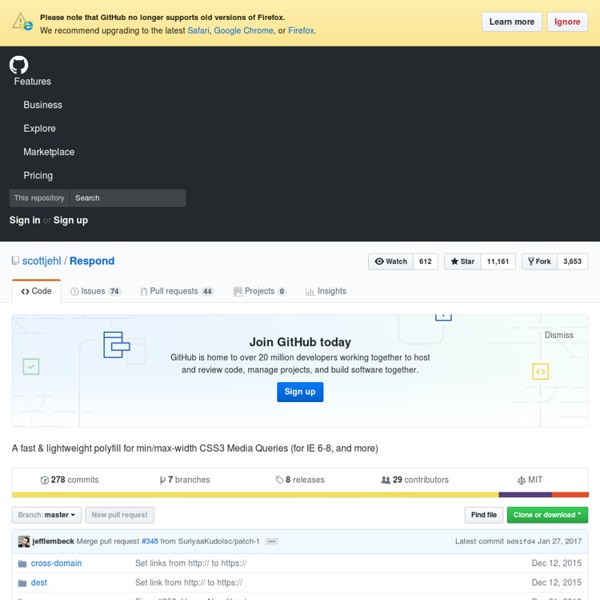How To Use CSS3 Media Queries To Create a Mobile Version of Your Website
Advertisement Many companies try to create a great experience for customers. But few are willing to make the changes required to deliver on that promise. In fact most don’t even realize just how bad their experience can be. This is why we made a new book called “User Experience Revolution,” a practical battle plan for placing the user at the heart of your company.
service
Just the polyfills you need for your site, tailored to each browser. Copy the code to unleash the magic: Polyfill.io reads the User-Agent header of each request and returns polyfills that are suitable for the requesting browser.
generatedata.com
This data type randomly generates human names (mostly Western) according to the format you specify. You can specify multiple formats by separating them with the pipe (|) character. The following strings will be converted to their random name equivalent: This data type randomly generates names. It works in the same way as the Names data type, except that it creates slightly more realistic data sets since the names are mapped to the country; e.g.
Media types
7.1 Introduction to media types One of the most important features of style sheets is that they specify how a document is to be presented on different media: on the screen, on paper, with a speech synthesizer, with a braille device, etc. Certain CSS properties are only designed for certain media (e.g., the 'page-break-before' property only applies to paged media). On occasion, however, style sheets for different media types may share a property, but require different values for that property. For example, the 'font-size' property is useful both for screen and print media.
How To Write Mobile-first CSS
17th Dec 2014 Building responsive websites is a must-have skill for front-end developers today. When we speak about responsive websites, the term mobile-first pops into mind immediately.
A Beginner's Guide to HTML5 Cross-Browser Polyfills
The web can seem fast moving. New frameworks, tools, and even languages come and go. Yet many developers feel that they have to move as fast as their slowest user. New browsers are ‘evergreen’ — they auto-update unseen in the background without asking for permission, and they’re making leaps and bounds in terms of progressing new APIs. Yet even modern browsers implement features at different times.
Meet Bower: A Package Manager For The Web
As the web platform has matured, the tools for managing our projects, too, have matured. In this tutorial, I’ll introduce you to one of these tools that makes managing the dependencies of your project considerably easier: Bower. When I first looked into Bower, I wasn’t exactly sure how it fit in: it wasn’t just a JavaScript package manager, like Jam, and it wasn’t a module loader, like RequireJS. It calls itself a browser package manager, but what exactly does this mean?
Media Queries
Abstract HTML4 and CSS2 currently support media-dependent style sheets tailored for different media types. For example, a document may use sans-serif fonts when displayed on a screen and serif fonts when printed. ‘screen’ and ‘print’ are two media types that have been defined. Media queries extend the functionality of media types by allowing more precise labeling of style sheets. A media query consists of a media type and zero or more expressions that check for the conditions of particular media features.
Responsive Web Design · An A List Apart Article
The English architect Christopher Wren once quipped that his chosen field “aims for Eternity,” and there’s something appealing about that formula: Unlike the web, which often feels like aiming for next week, architecture is a discipline very much defined by its permanence. Article Continues Below A building’s foundation defines its footprint, which defines its frame, which shapes the facade. Each phase of the architectural process is more immutable, more unchanging than the last. Creative decisions quite literally shape a physical space, defining the way in which people move through its confines for decades or even centuries.



